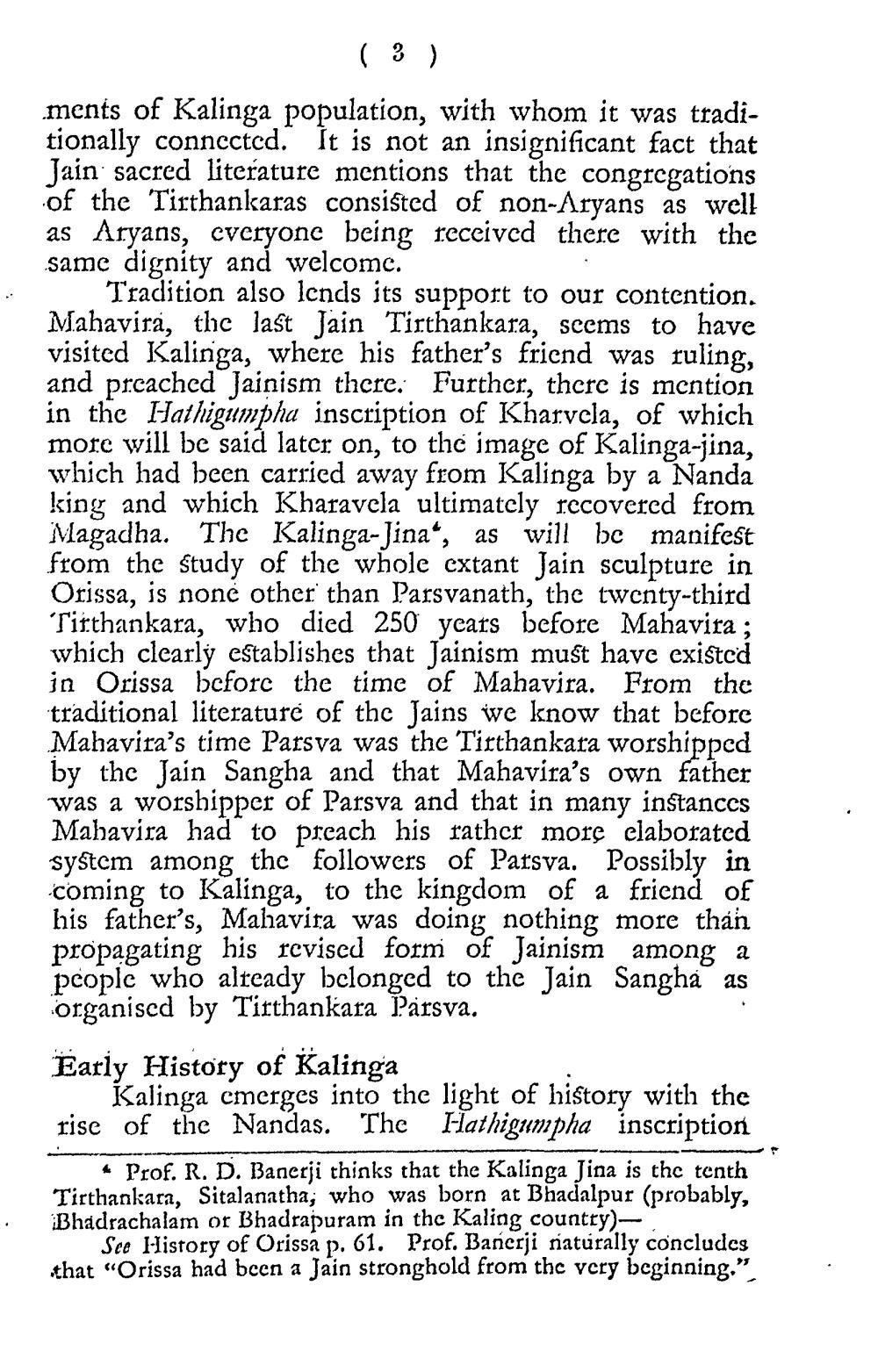________________
( 3 )
ments of Kalinga population, with whom it was traditionally conncctcd. It is not an insignificant fact that Jain sacred literature mentions that the congregations of the Tirthankaras consisted of non-Aryans as well as Aryans, everyone being received there with the samc dignity and welcome.
Tradition also lends its support to our contention. Mahavira, the last Jain Tirthankara, scems to have visited Kalinga, where his father's friend was ruling, and preached Jainism there. Further, there is mention in the Hathigumpha inscription of Kharvcla, of which more will be said later on, to the image of Kalinga-jina, which had been carried away from Kalinga by a Nanda king and which Kharavela ultimately recovered from Magadha. The Kalinga-Jina“, as will be manifest from the study of the whole cxtant Jain sculpture in Orissa, is none other than Parsvanath, the twenty-third Tirthankara, who died 250 years before Mahavira ; which clearly establishes that Jainism must have existed in Orissa before the time of Mahavira. From the traditional literature of the Jains we know that before Mahavira's time Parsva was the 'Tirthankara worshipped by the Jain Sangha and that Mahavira's own father. was a worshipper of Parsva and that in many instances Mahavira had to preach his rather more elaborated system among the followers of Parsva. Possibly in coming to Kalinga, to the kingdom of a friend of his father's, Mahavira was doing nothing more than propagating his revised form of Jainism among a people who already belonged to the Jain Sanghá as organised by Tirthankara Parsva. Early History of Kalinga
Kalinga cmerges into the light of history with the rise of the Nandas. The Hathigumpha inscription
« Prof. R. D. Bancrji thinks that the Kalinga Jina is the tenth Tirthankara, Sitalanatha, who was born at Bhadalpur (probably, iBhadrachalam or Bhadrapuram in thc Kaling country)
See History of Orissa p. 61. Prof. Bancrji naturally concludes that “Orissa had been a Jain stronghold from the very beginning."




